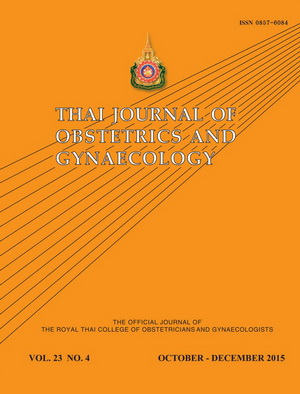Prevalence and Risk Factors for Positive Surgical Margin after Loop Electrosurgical Excision Procedure (LEEP) in Patients with High Grade Squamous Intraepithelial Lesion
Main Article Content
Abstract
Objective: To determine the prevalence and risk factors for positive surgical margin after LEEP in patients with high grade squamous intraepithelial lesion (HSIL).
Material and Methods: Medical records of all women (n = 575) who underwent LEEP and histopathological diagnosed HSIL between January 2008 and December 2012 in our institution were reviewed. The margins of surgical specimens were re-evaluated by a pathologist. Clinical data and status of surgical margin were recorded. The prevalence and risk factors for positive surgical margin were analyzed.
Results: Complete data of 547 women with HSIL who underwent LEEP were obtained. Mean age of the women was 41.8 ± 12.5 years (ranging from 17 to 75 years). The majority of them were multiparous (n = 405 or 74.1%) and premenopause (n=464 or 84.8%). Positive LEEP surgical margin was found in 167 cases (30.5 %). In multivariable analysis, multiparity and glandular involvement were two independent risk factors for positive LEEP surgical margin; adjusted relative risk of 8.10 (95% confidence interval, 3.82-17.20) and 14.10 (95% confidence interval, 8.34-23.83), respectively.
Conclusion: The prevalence of positive margin in women with HSIL who underwent LEEP was 30.5 %. Multiparity and glandular involvements were significant factors associated with the margin involvement.


